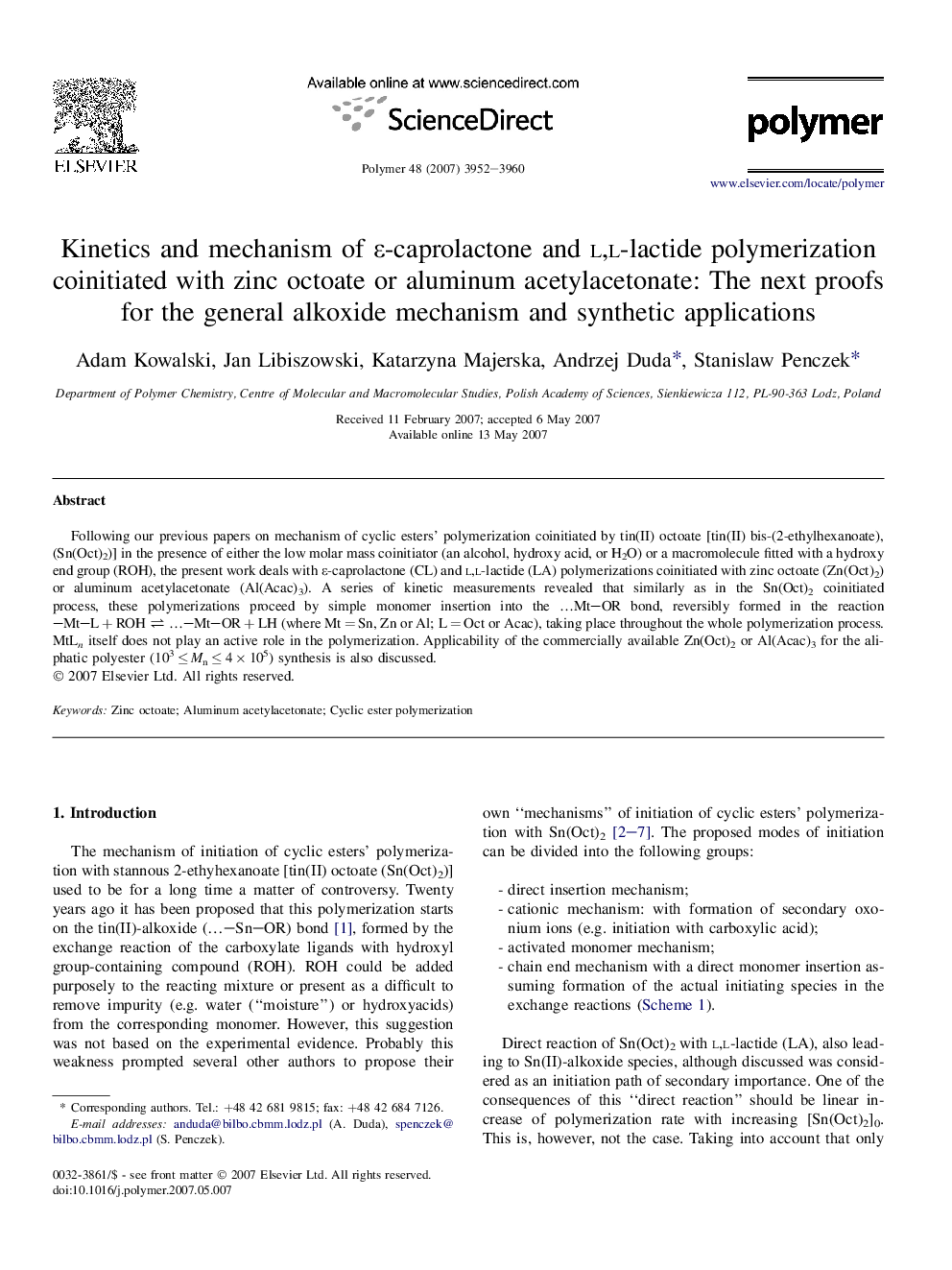| Article ID | Journal | Published Year | Pages | File Type |
|---|---|---|---|---|
| 5189926 | Polymer | 2007 | 9 Pages |
Following our previous papers on mechanism of cyclic esters' polymerization coinitiated by tin(II) octoate [tin(II) bis-(2-ethylhexanoate), (Sn(Oct)2)] in the presence of either the low molar mass coinitiator (an alcohol, hydroxy acid, or H2O) or a macromolecule fitted with a hydroxy end group (ROH), the present work deals with É-caprolactone (CL) and l,l-lactide (LA) polymerizations coinitiated with zinc octoate (Zn(Oct)2) or aluminum acetylacetonate (Al(Acac)3). A series of kinetic measurements revealed that similarly as in the Sn(Oct)2 coinitiated process, these polymerizations proceed by simple monomer insertion into the â¦Mt-OR bond, reversibly formed in the reaction -Mt-L + ROH â â¦-Mt-OR + LH (where Mt = Sn, Zn or Al; L = Oct or Acac), taking place throughout the whole polymerization process. MtLn itself does not play an active role in the polymerization. Applicability of the commercially available Zn(Oct)2 or Al(Acac)3 for the aliphatic polyester (103 â¤Â Mn â¤Â 4 Ã 105) synthesis is also discussed.
